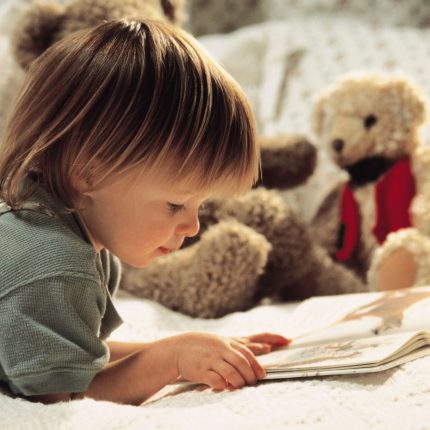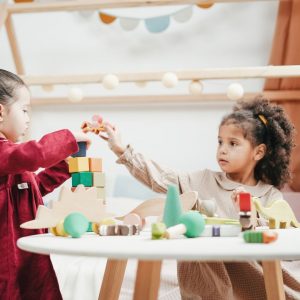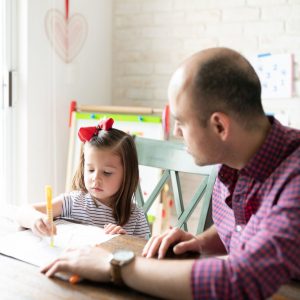
How to Know if Your Preschooler is Ready to Read?
April 24, 2023Do you have a preschooler and wonder if your little one is ready to start reading? Looking for signs of reading readiness during the preschool years is a common hobby with homeschool moms. But, remembering that all learners are ready to read at a different time and pace, and following their lead is essential. Some are ready to follow a structured phonics program, and some seem to pick up reading naturally.
As a former homeschooler of sons who are now graduate and undergraduate students in college and are excelling, I can assure you from personal experience that reading or not reading in preschool does not foretell success or failure as a student later in life.
It’s best to wait until your child shows a readiness to read. If your child is approaching eight or nine years old and writes letters and numbers backward, confuses left and right, wants and tries to read but is experiencing difficulty you may want to consider testing for language challenges.
Reading Readiness Happens at Different Times
My guys did not show interest or readiness to read until first grade. One was completely uninterested in the letters of the alphabet, but when forced to write his name, letters, and numbers, he never reversed anything, and he could name all the letters and say their sounds. He just had no interest in reading books. He was a very auditory learner and just preferred to listen to stories or recite them from memory. By the time he was finishing first grade, a light switch turned on for him, and he could pick up a reader with a fifth-grade reading level and rattle it off with ease.
My other learner had speech, reading, and writing challenges and we had to address those with different learning therapies. After following a structured phonics program and at the end of second grade, his reading and writing ability took off above grade level.
All learners are different. Some are ready and eager to read at an early age, while others take their own sweet time. If you think your preschooler may be wanting to learn how to read, here are signs you can look for to know it may be time to introduce reading to your little learner.
Knows the Letters of the Alphabet and Their Sounds
Your learner is able to name most letters of the alphabet and their sounds.
Pretends to Read and Write
When your child pretends to read a book on their own and write letters and words, even though they may not make sense, they are demonstrating the desire to be able to do the real thing.
Shows Interest in Reading
Your child picks up books to look at on their own or asks you to read to them. They try to recite the story and turn the pages on their own. They might take “their turn” to read when you read together.
Interacts with You When Reading
Your learner participates in the reading experience with you. Your child demonstrates how to hold the book with pages being read left to right and front to back. They may want to turn the pages for you when they think you’ve come to the end of that page.
Can Remember and Retell What You’ve Read
Your child shows another sign of reading readiness when he can remember what you’ve just read or answer questions you ask while reading. They should be able to follow along and understand the story. It’s important that they be able to comprehend and have a grasp on vocabulary to be able to read in a fluent manner.
Plays with Sounds and Rhyming Words
Another sign that your child is ready to read is when they begin to play with the sounds of letters at the beginning and end of words and with rhyming sounds and words. Familiarity with rhyming and word families allows your child to read fluently and in rhythm.
Break Words into Sounds and Syllables
Learners are ready to read when they can break words into sounds, blend sounds, and read a word syllable by syllable. These are the building blocks for approaching and reading words for the first time.
Reading together for at least 15 minutes per day and making it an enjoyable time is the most important first step in reading with your child. They will always remember that time together and associate reading with pleasant feelings and learn reading is an enjoyable experience to look forward to.
More About the Author:
Katie is a homeschool mom who graduated two boys who are now in college. Katie has an English and Secondary Education degree with classroom, online, and coop teaching experience as well as teacher training for grades PK through adult. Katie loves learning history through hands-on activities and science through nature exploration and has a passion for literature and the written word! Katie loves to share her experiences and joy for learning with other homeschoolers to help them make their journey more enjoyable and less stressful! Visit her at Katie’s Homeschool Cottage!
Additional Homeschool Content
How to Improve Your Child’s Reading Skills
How to Personalize Your Child’s Education
Related Posts

Preschoolers are natural explorers. What better time to introduce them to independent learning than when they are at their most curious? Learn more here!
Read more >
Experienced homeschool mom of 9 shares her tips for homeschooling a preschooler!
Read more >